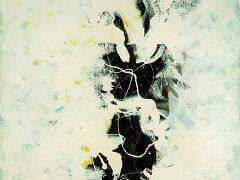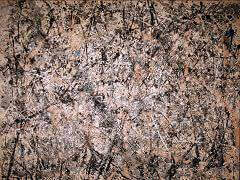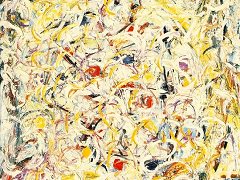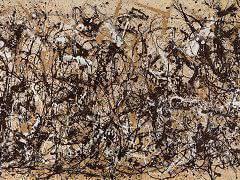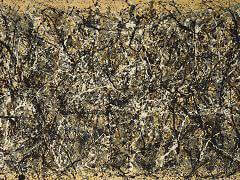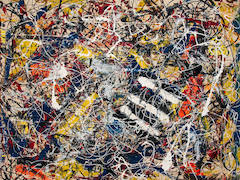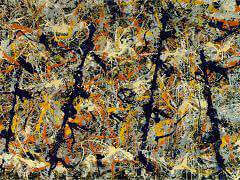Out of the Web, 1949 by Jackson Pollock
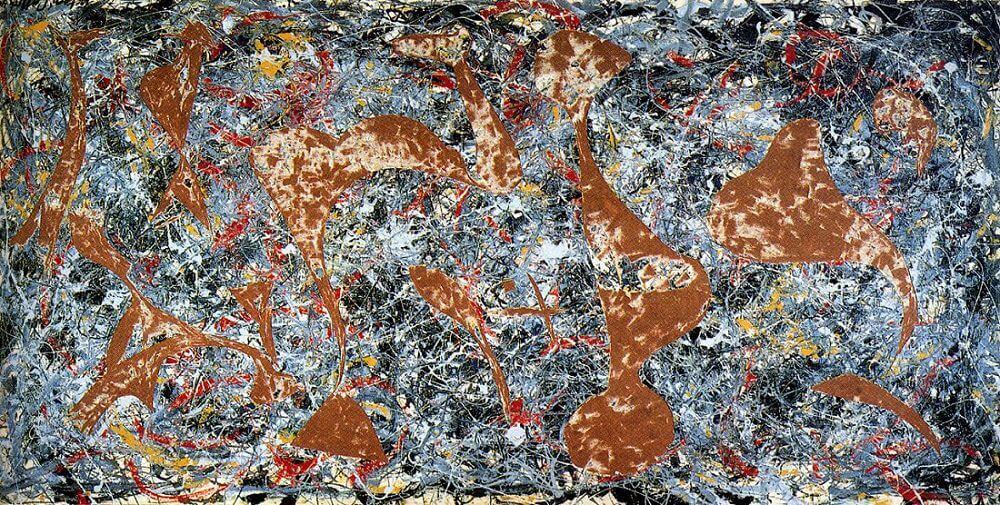
Evelyn Segal, a visitor to Jackson Pollock's studio on September 25, 1949, noted in her journal that she saw there an unusual work in which simple non-natural forms had been cut into a masonite panel. These were definitely recessed, having been gouged out as if the surface were a huge linoleum block. Segal observed that, although Pollock continued the paint sparingly onto the recessed parts, he left the backing mostly empty to provide another color and texture. She was certainly referring to Number 7, 1949 a work exhibited at Janis six years later as Out of the Web. A view of his studio shot a few months prior to Segal's visit shows that Pollock's original intention with this work had been more conventional. In this picture Number 7 is seen propped against the barn wall, seemingly finished, with its intricate surface intact. The extreme thickness of the work, which was comprised of a more than typical number of layers, seems to have made Pollock doubtful of its success. He may have concluded that the only remedy for saving the work might be to apply the technique of the cut-out collages.
Only vaguely biomorphic, the absent areas in Out of the Web do not represent human beings as clearly as they did in the small works on paper. That at least one was intended as a dancing figure is suggested by the fact that Pollock glued its remnant onto a piece of wood, attached strings to it and gave it to John Bernard Myers for use as a puppet. Another difference from the smaller cut-out works is that there is no intervening layer in Out of the Web; Pollock scraped and then extracted sections of pigment directly from the masonite - a reversal of his method and intentions in many of the earlier works, where he began with the imagery he would later expunge. Here the shapes only implied in previous pourings are "unveiled," their mystery heightened as the result of this unexpected exposure.



